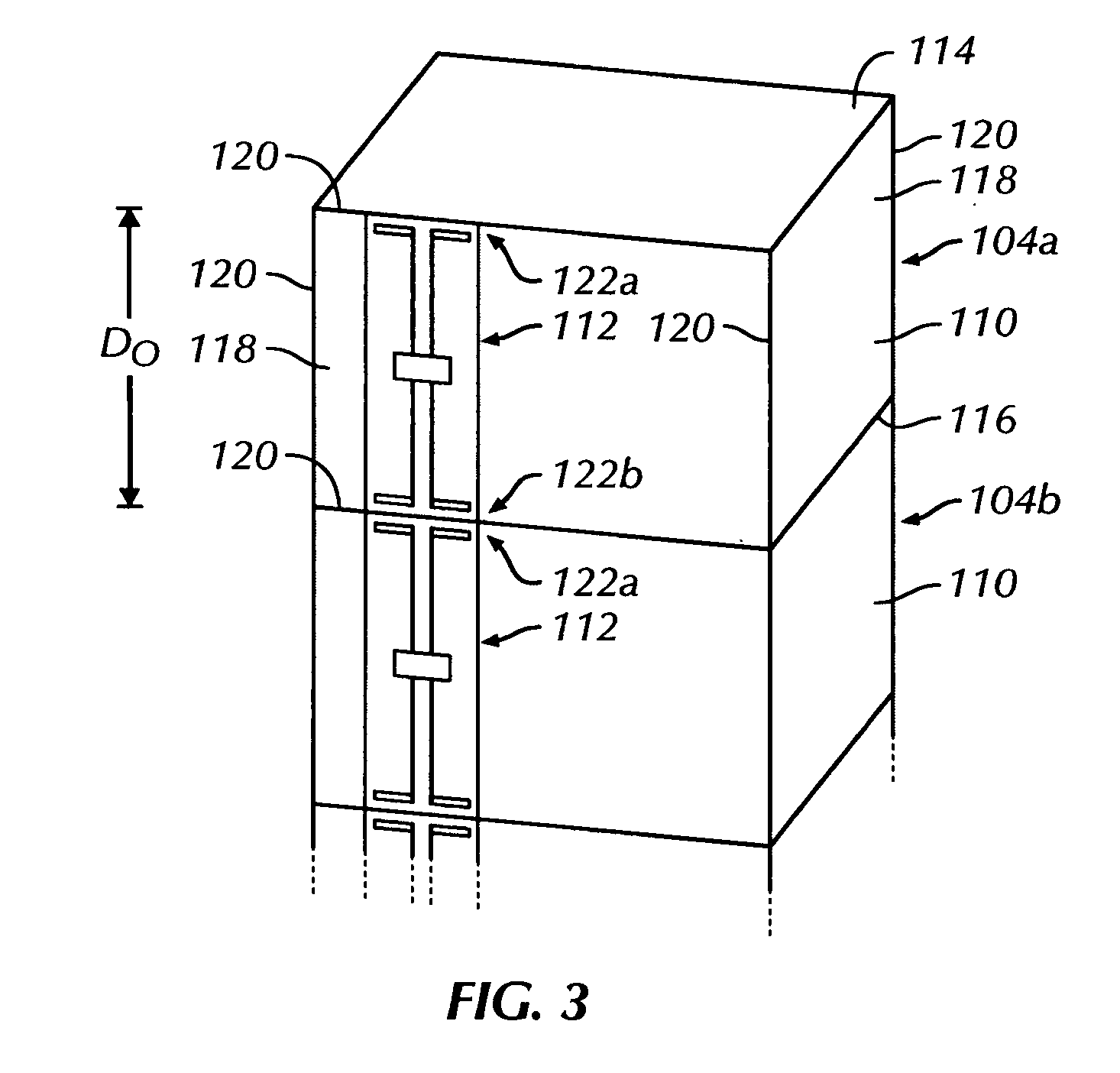RFID tags for enabling batch reading of stacks of cartons
a technology of rfid tags and cartons, applied in the field of radiofrequency identification systems, can solve the problems of reducing the operative proximity of the tags, reducing the distance between adjacent antennas, and absorbing water
- Summary
- Abstract
- Description
- Claims
- Application Information
AI Technical Summary
Benefits of technology
Problems solved by technology
Method used
Image
Examples
Embodiment Construction
[0041] Referring more particularly to FIGS. 1 and 2 of the drawings, a radio-frequency identification (RFID) system 100 increases the read performance of a load 102 that includes a plurality of RFID-enabled objects 104. In a number of embodiments, the system 100 may include a reader or interrogator 106 and a computer 108. The reader 106 transmits and receives energy in the form of radio waves to and from the load 102, and passes information associated with the load 102 and carried by the received energy to the computer 108. The computer 108 in turn may be connected to, for example, a network, an output device, and / or a database for further processing of the information.
[0042] With additional reference to FIG. 3, in a number of embodiments, an RFID-enabled object 104 may include an object 110 and an RFID tag 112. For purposes of this description, the object 110 may be defined as having a top 114, a bottom 116, and four sides 118 each having four edges 120. With additional reference ...
PUM
 Login to View More
Login to View More Abstract
Description
Claims
Application Information
 Login to View More
Login to View More - Generate Ideas
- Intellectual Property
- Life Sciences
- Materials
- Tech Scout
- Unparalleled Data Quality
- Higher Quality Content
- 60% Fewer Hallucinations
Browse by: Latest US Patents, China's latest patents, Technical Efficacy Thesaurus, Application Domain, Technology Topic, Popular Technical Reports.
© 2025 PatSnap. All rights reserved.Legal|Privacy policy|Modern Slavery Act Transparency Statement|Sitemap|About US| Contact US: help@patsnap.com



